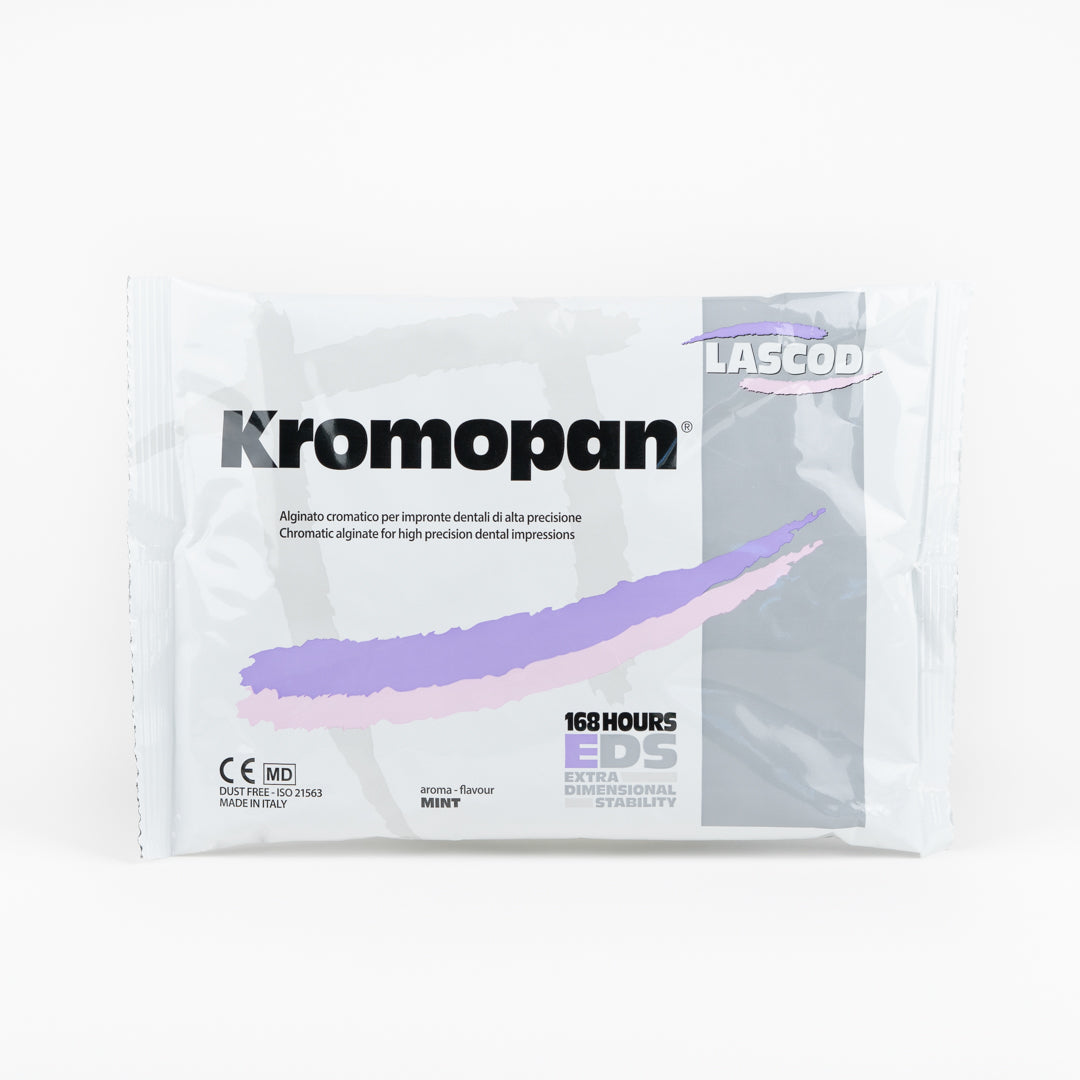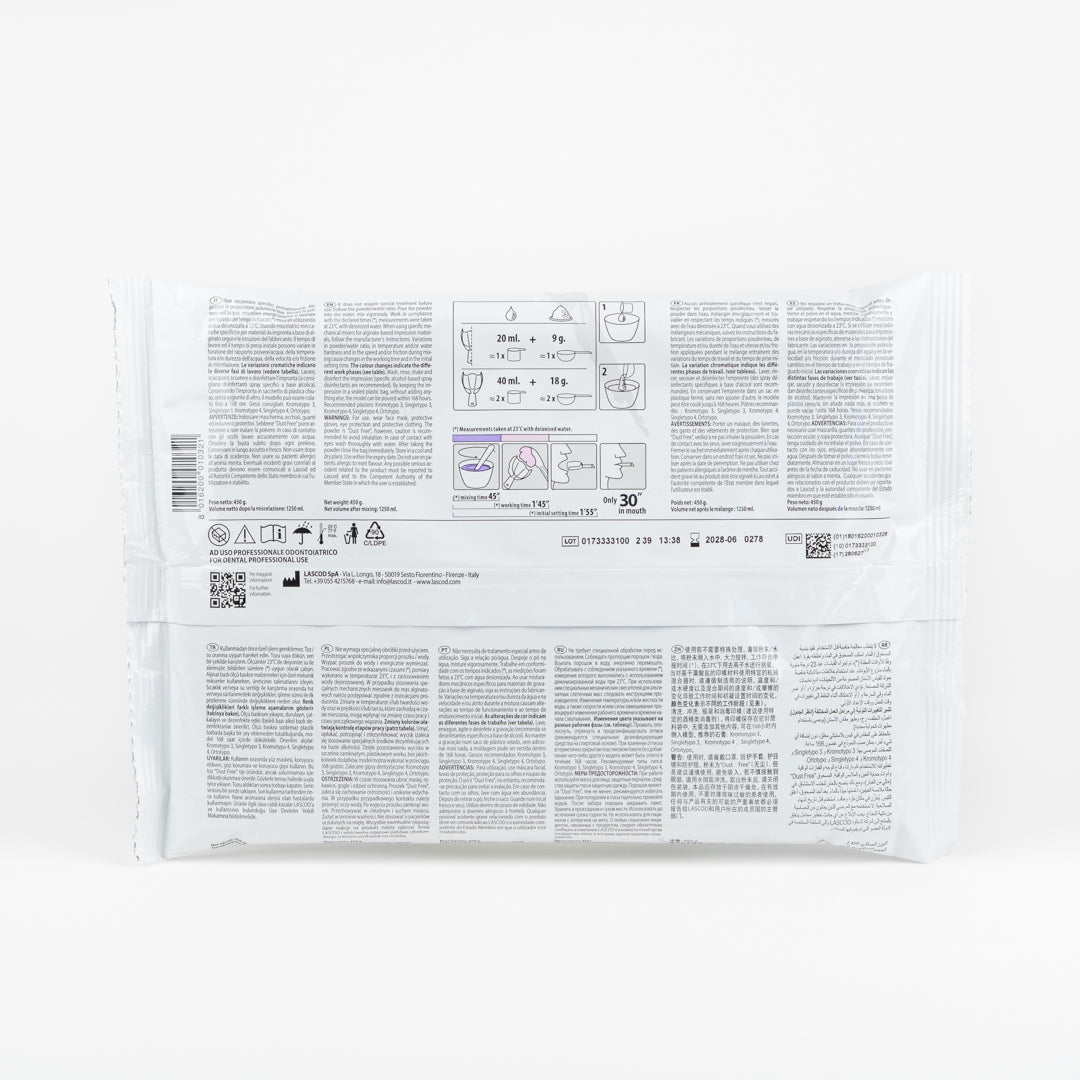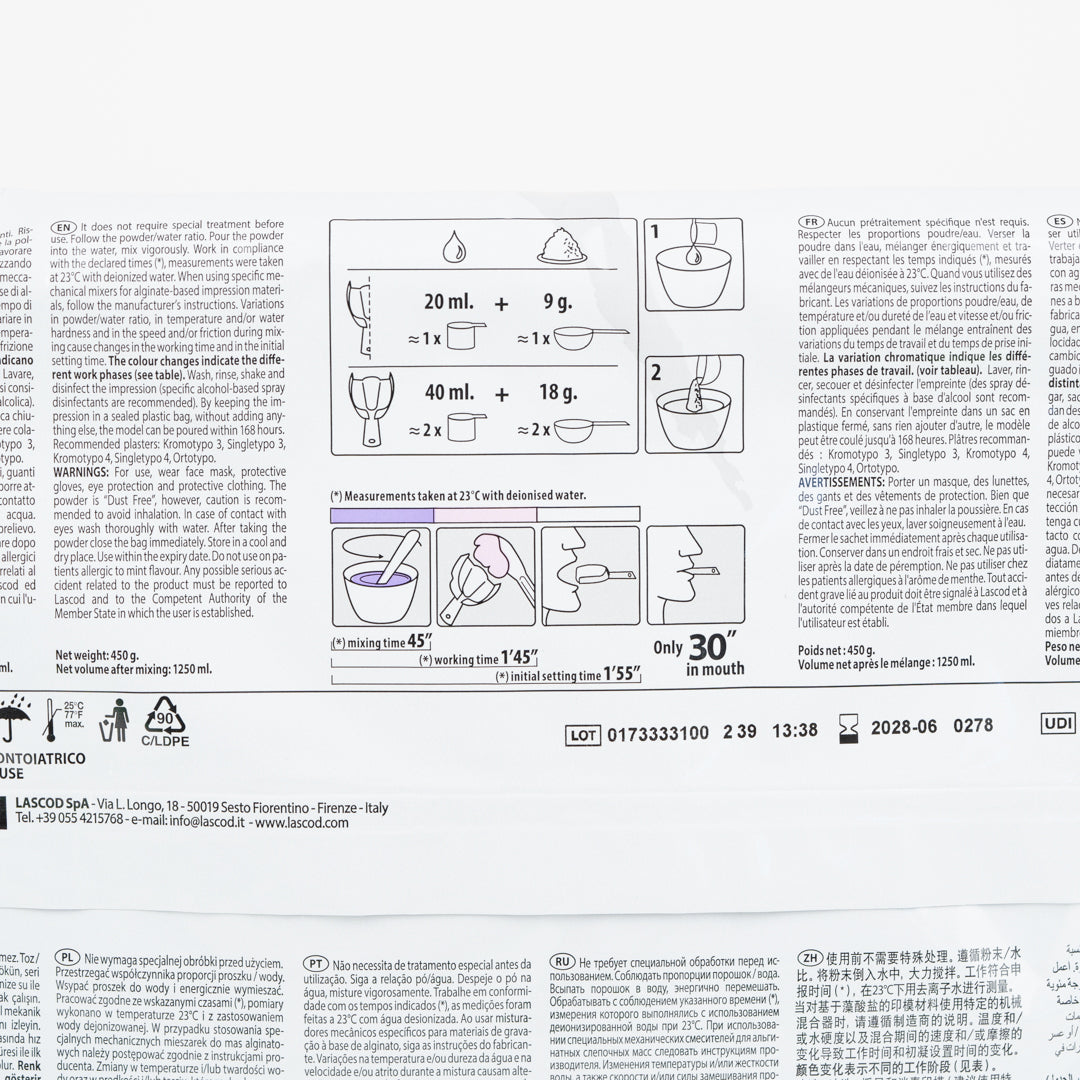


Kromopan Chromatic Alginate 450g
Mix 2 parts water to 1 part alginate. Makes 1250g
What Can I Use Alginate For?
Alginate is available for purchase in a powdered or granulated form; perfect for creating castings and impressions. If creating an impression, the gel can be mixed with water until the desired thickness is achieved. This gives a personalized approach to the consistency, offering custom results. When removing the object, innate details (down to fingerprints) can be seen within the mould. To create a casting, a suitable material must be added to the mould. After the moulding agent has been set, an exact duplicate of the casting has been created.
Alginate, also called Alginic acid is a compound found within the cell walls of brown algae. It is considered extremely safe as it is most naturally extracted from the cells as a polysaccharide. The Alginate is often combined with water to create a viscous gum paste, perfect for creating moulds of dental impressions, hands, feet or other small scale items.
Alginate has a unique ability to hold upwards of 200-300 times its own weight in water, making it a naturally gelling substance. The alginate can be adapted to the thickness needed to perform the casting or use – making it a diverse product for casting, thickening or pharmaceutical needs.
What is Alginate made of?
Alginate is found within the cell walls of brown seaweeds. The seaweed is part of the phylum Phaeophyceae family and is harvested internationally to be converted into the raw material sodium alginate. This substance is what’s used to create the Alginate product. Depending on the species of seaweed, various chemical structures can be found within each plant.
There are certain species of plant which will yield a product of higher gelling capacity; perfect for moulding hands or feet. Some plants will offer a weaker gel that it’s used within the medical genre of application. The colour of the gel is also dependent on the type of plant used as well.
Choose options



